Here is my C++ solution of the problem. The solution is simpler than all of the provided here so far, and it is fast: N*log(N) algorithmic time complexity. I submitted the solution at leetcode, it runs 4 ms, faster than 100% of C++ solutions submitted.

The idea is (in my opinion) clear: traverse the given array of numbers from left to right. Maintain additionally array of numbers (seq in my code), that holds increasing subsequence. When the taken number is bigger than all numbers that the subsequence holds, put it at the end of seq and increase the subsequence length counter by 1. When the number is smaller than the biggest number in the subsequence so far, put it anyway in seq, in the place where it belongs to keep the subsequence sorted by replacing some existing number. The subsequence is initialized with the length of the original numbers array and with initial value -inf, what means smallest int in the given OS.
Example:
numbers = { 10, 9, 2, 5, 3, 7, 101, 18 }
seq = {-inf, -inf, -inf, -inf, -inf, -inf, -inf}
here is how the sequence changes when we traverse the numbers from left to right:
seq = {10, -inf, -inf, -inf, -inf, -inf, -inf}
seq = {9, -inf, -inf, -inf, -inf, -inf, -inf}
seq = {2, -inf, -inf, -inf, -inf, -inf, -inf}
seq = {2, 5, -inf, -inf, -inf, -inf, -inf}
seq = {2, 3, -inf, -inf, -inf, -inf, -inf}
seq = {2, 3, 7, -inf, -inf, -inf, -inf}
seq = {2, 3, 7, 101, -inf, -inf, -inf}
seq = {2, 3, 7, 18, -inf, -inf, -inf}
The longest increasing subsequence for the array has length 4.
Here is the code:
int longestIncreasingSubsequence(const vector<int> &numbers){
if (numbers.size() < 2)
return numbers.size();
vector<int>seq(numbers.size(), numeric_limits<int>::min());
seq[0] = numbers[0];
int len = 1;
vector<int>::iterator end = next(seq.begin());
for (size_t i = 1; i < numbers.size(); i++) {
auto pos = std::lower_bound(seq.begin(), end, numbers[i]);
if (pos == end) {
*end = numbers[i];
end = next(end);
len++;
}
else
*pos = numbers[i];
}
return len;
}
Well, so far so good, but how do we know that the algorithm computes the length of the longest (or one of the longest, here may be several subsequences of the same size) subsequence? Here is my proof:
Let's assume that the algorithm does not computes length of the longest subsequence. Then in the original sequence must exist a number such that the algorithm misses and that would make the subsequence longer. Let's say, for a subsequence x1, x2, ..., xn there exists a number y such that xk < y < xk+1, 1 <= k <= n. To contribute to the subsequence y must be located in the original sequence between xk and xk+1. But then we have contradiction: when the algorithm traverses original sequence from left to right, every time it meets a number bigger than any number in the current subsequence, it extends the subsequence by 1. By the time algorithm would meet such number y the subsequence would have length k and contain numbers x1, x2, ..., xk. Because xk < y, the algorithm would extend the subsequence by 1 and include y in the subsequence. The same logic applies when y is the smallest number of the subsequence and located to the left of x1 or when y is the biggest number of the subsequence and located to the right of xn.
Conclusion: such number y does not exists and the algorithm computes the longest increasing subsequence.
I hope that makes sense.
In the final statement, I would like to mention that the algorithm can be easily generalized to compute longest decreasing subsequence as well, for any data types which elements can be ordered.
The idea is the same, here is the code:
template<typename T, typename cmp = std::less<T>>
size_t longestSubsequence(const vector<T> &elements)
{
if (elements.size() < 2)
return elements.size();
vector<T>seq(elements.size(), T());
seq[0] = elements[0];
size_t len = 1;
auto end = next(seq.begin());
for (size_t i = 1; i < elements.size(); i++) {
auto pos = std::lower_bound(seq.begin(), end, elements[i], cmp());
if (pos == end) {
*end = elements[i];
end = next(end);
len++;
}
else
*pos = elements[i];
}
return len;
}
Examples of usage:
int main()
{
vector<int> nums = { 0, 8, 4, 12, 2, 10, 6, 14, 1, 9, 5, 13, 3, 11, 7, 15 };
size_t l = longestSubsequence<int>(nums); // l == 6 , longest increasing subsequence
nums = { 0, 8, 4, 12, 2, 10, 6, 14, 1, 9, 5, 13, 3, 11, 7, 15 };
l = longestSubsequence<int, std::greater<int>>(nums); // l == 5, longest decreasing subsequence
vector<string> vstr = {"b", "a", "d", "bc", "a"};
l = longestSubsequence<string>(vstr); // l == 2, increasing
vstr = { "b", "a", "d", "bc", "a" };
l = longestSubsequence<string, std::greater<string>>(vstr); // l == 3, decreasing
}
